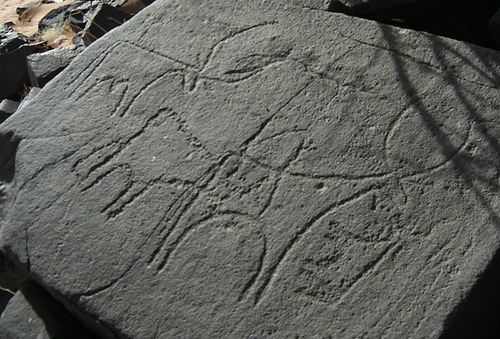El arte rupestre en el Camino de Santiago

La Red Europea de Primeros Pobladores y Arte Rupestre Prehistórico (REPPARP) ha recogido en una guía 49 destinos franceses y españoles de una ruta que aspira a convertirse en Itinerario Cultural Europeo, en el 'Camino de Santiago' de un legado común del suroeste de Europa.
A la ruta, integrada inicialmente por ocho regiones, Ariéne (Midi-Pirénées), Andalucía, Aragón, Asturias, Cantabria, Ciudad Rodrigo (Castilla y León), Castilla-La Mancha y la Comunidad Valenciana, se adhirieron hoy de forma efectiva Cataluña y Extremadura.
Así lo indicó, en declaraciones a EFE, el coordinador técnico de la REPPARP, Ramón Montes, con motivo de la presentación de la guía en Zaragoza y de la página web 'www.prehistour.com ', a la que acudió el director general de Bellas Artes del Ministerio de Cultura, Julián Martínez, quien expresó su apoyo a este proyecto 'atractivo', con un soporte 'contundente' y con 'futuro'.
Respecto a los destinos de la red, Montes avanzó que aumentarán próximamente hasta 55, con la adhesión de Cataluña y Extremadura, y que de diez regiones pasarán a unas quince, con la previsión de incorporación de Galicia, Guipúzcoa, Vizcaya y regiones portuguesas.
'Estamos ante lo que dentro de poco va ser el gran Camino de Santiago del arte rupestre del suroeste de Europa', donde se concentra en torno al 95 por ciento del arte rupestre europeo conservado, ya que las expectativas sobre el proyecto son 'muy halagüeñas', después de que se elevara en septiembre de 2006 ante el Instituto de Itinerarios Culturales de la Comisión Europea, haya pasado 'el primer filtro' y esté en fase de análisis.
El itinerario propuesto, que abarca un amplio territorio, se desarrolla en tres ejes temáticos: pirenaico-cantábrico, atlántico y mediterráneo.
Hasta ahora, precisó, la red ha trabajado en la creación de una 'marca' de arte rupestre prehistórico -considerado por la UNESCO Patrimonio de la Humanidad- como un producto turístico en el ámbito rural de calidad, partiendo de la existencia de activos como las cuevas de Altamira o de Nerja o Minateda, que reciben miles de visitantes al año.
Estos yacimientos, unidos a los menos conocidos, son los que formarían ese Itinerario Cultural Europeo, que incluye las caras norte y sur de los Pirineos (Francia y España) y toda la Península Ibérica.
4 comentarios
Nike Shox Turbo -
Daniel -
Anónimo -
Daniel Verdejo -
ARTE RUPESTRE - ROCK ART - PREHISTORY - ANTHROPOLOGY - PRIMITIVE ART.
- ARTE CONTEMPORANEO - CONTEMPORARY ART - TRIBAL ART
Cientos de Pinturas Rupestres de todo el Mundo:Venus, Erotismo, Chamanes, Danza, Animales, Caza, Guerra...
- Enlaces de arte Prehistorico: Arqueologia, Antropologia, Etnologia,
Tribus Aborigenes Primitivas
- Arte Contenporaneo: Museos, Galerias, Artistas..
Web del Artista plastico Daniel Verdejo.
Barcelona. España -
Prehistoric Man and his Art: Many reproductions of ancient drawings and carvings fron all over the world, with descriptions.
By artist Daniel Verdejo; in Barcelona Spanish
[www.arterupestre-c.com]